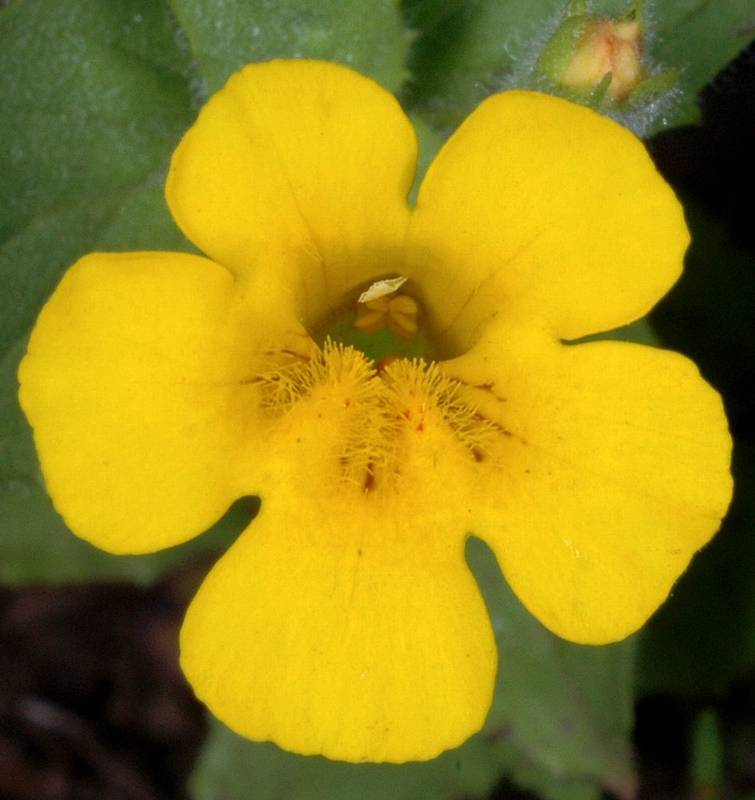Erythranthe moschata
Erythranthe ampliata
musk-flower, musk-plant
Nez Perce monkey-flower
Leaves opposite, remotely toothed, pinnately veined, sessile or short-petiolate, the blade ovate to elliptic-ovate, 1-8 cm. long and 7-35 mm. wide.
Leaves cauline, basal leaves not persistent; petiolate, 8-20 mm;
blade broad-ovate to lanceolate, 8-25 mm long and 5-19 mm broad, venation palmate, wedge-shaped base, margins toothed or somewhat finely toothed, apex acute to obtuse, surfaces glandular and hairy as stems.
Flowers solitary in the leaf axils on long pedicels;
calyx 7-13 mm. long, viscid-villous, especially on the 5 rib angles, the 5 teeth pointed, 2-4 mm. long, the upper tooth a little larger than the others;
corolla 1.5-3 cm. long, yellow, often with some dark lines or dots, only slightly bilabiate, the tube nearly cylindrical;
stamens 4.
Axillary flowers 1-10, emerging from nodes throughout; fruiting pedicels glandular-hairy as stems, 10-22 mm;
calyx tubular-campanulate, sometimes weakly inflated, 6-8 mm, margins with distinct serration or lobes, sparsely covered with minute stalked glands or not;
corolla yellow with occasional small white patches, lower limb with several brownish spots, bilaterally symmetric and distinctly bilabiate;
tube-throat broadly funnel-shaped, generally 8-12 mm, protruding beyond calyx margin;
lobes obovate-oblong with rounded or truncate apexes;
styles glabrous;
anthers not protruding, glabrous.
Capsule.
Capsules 5-6 mm, included.
Erythranthe moschata
Erythranthe ampliata
- Local floras:
BC,
CA,
OR,
WA
- Local Web sites:
CalFlora,
CalPhotos,
Flora NW,
PNW Herbaria
WildflowerSearch
iNaturalist (observations)
- LBJ Wildflower Center
- SEINet
- Plants of the World Online
- Encyclopedia of Life
- Wikipedia
- Google Image Search
- Local floras:
WA
- Local Web sites:
Flora NW,
PNW Herbaria
WildflowerSearch
iNaturalist (observations)
- LBJ Wildflower Center
- SEINet
- Plants of the World Online
- Encyclopedia of Life
- Wikipedia
- Google Image Search


